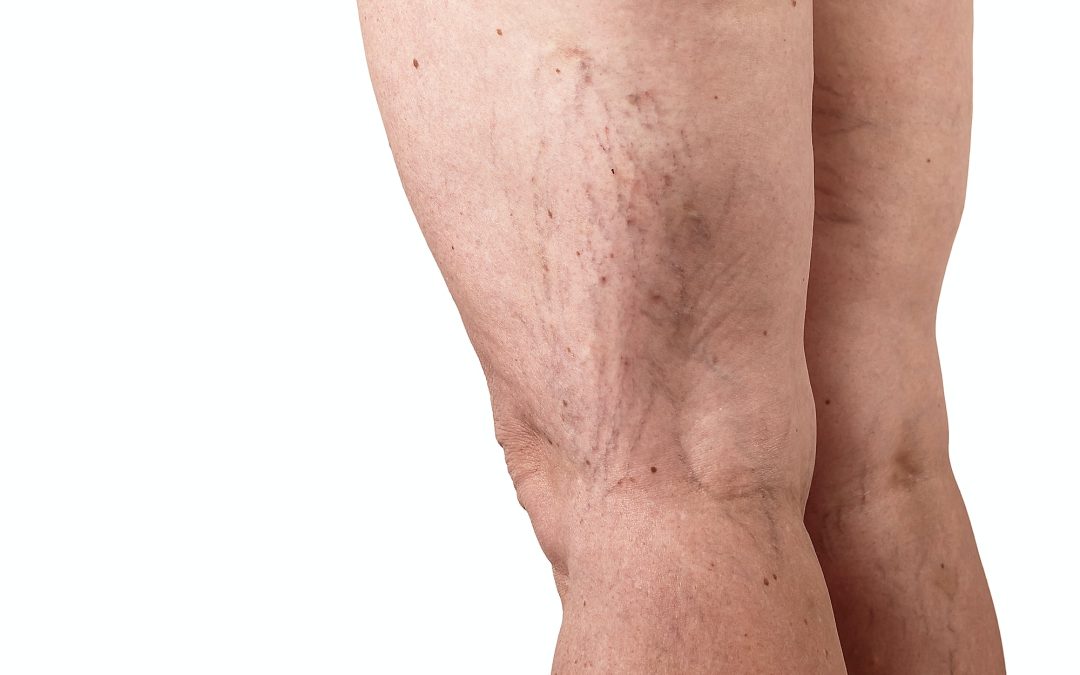Maintaining healthy circulation is important and varicose veins may be a sign of poor circulation. What causes varicose veins? Find out.
Most commonly found in the legs, varicose veins are enlarged and twisted veins that can happen anywhere in the body. While they are not a serious medical condition, they can be uncomfortable, embarrassing, and may lead to more serious issues.
There are milder types of varicose veins called spider veins, which are smaller and may look like a spider web. Moreover, these types are either red or blue and are commonly found either on the face or legs, just under the skin.
Causes of Varicose Veins
 Varicose veins are superficial, occur in the veins near the skin’s surface, and are a result of increased blood pressure. For example, if you sit or stand for long periods, your blood may pool in your leg veins, increasing pressure.
Varicose veins are superficial, occur in the veins near the skin’s surface, and are a result of increased blood pressure. For example, if you sit or stand for long periods, your blood may pool in your leg veins, increasing pressure.
They may also be more common in some families and certain factors can increase the risk of varicose veins. For instance, obesity, leg injuries, smoking, pregnancy, older age, and being inactive can all lead to the condition.
Moreover, in cases of severe varicose veins, there is a chance of developing deep being thrombosis (DVT). This is a serious condition where blood clots develop in the deep veins and may lead to pulmonary embolisms.
Signs of DVT include pain, swelling, and redness of the leg (although, clots may also happen in the arms or other areas). For this reason, you should call your doctor right away if you have symptoms of blood clotting and DVT.
Treating Varicose Veins
You can reduce the risk of developing varicose veins by maintaining a healthy weight and exercising regularly. In addition, you can put your feet up while sitting, avoid crossing your legs, and not wear tight clothing.
If you already have them, your specific treatment will be determined by your doctor based on various factors. These include your age, overall health, the extent of the condition, signs and symptoms, medical history, and more.
Depending on your diagnosis, treatment may involve elevation of the legs, using compression stockings, or undergoing certain procedures.
The most common procedure is sclerotherapy, which involves injecting a saline or chemical solution into the affected veins. Afterward, since they no longer carry blood, other veins will take over. In addition to sclerotherapy, your doctor may recommend other procedures such as thermal ablation, vein stripping, and microphlebectomy.
The Outlook
 When it comes to varicose veins, it’s important to remember that they are not usually serious, but may lead to complications. For this reason, you should prevent them and keep an eye out for signs of blood clots and inflammations.
When it comes to varicose veins, it’s important to remember that they are not usually serious, but may lead to complications. For this reason, you should prevent them and keep an eye out for signs of blood clots and inflammations.
In addition, you can give your veins an extra health boost by taking supplements like L-arginine Plus. As daily heart supplements, they can effectively promote your circulation, blood pressure health, cholesterol health, and more.
Give your vein health the support it deserves by preventing varicose veins and taking L-arginine Plus.

